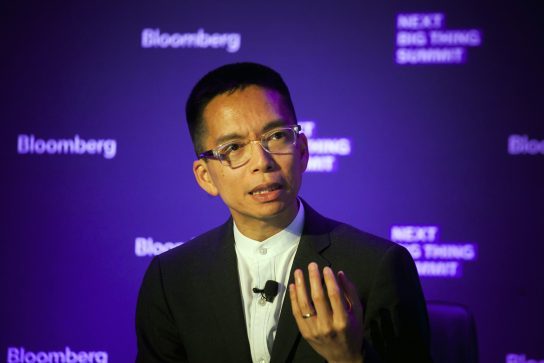
This is the web version of Business by Design, Fortune‘s newsletter on the transformative power of business. Sign up here.
If you’re reading this, you’re part of a special community.
Sometime over the last eighteen months, you attended one of Fortune’s invitation-only Brainstorm Design conferences in Singapore; were invited to one of our design-focused private dinners in London, New York, San Francisco, Hong Kong or Shanghai, or signed up on our website for a newsletter reflecting the unique ethos of those events.
Introducing Business by Design.
This newsletter will publish weekly on Tuesdays. It will share Brainstorm Design’s dedication to three simple propositions:
- Design has transformative power (for good and evil).
- Design is of vital relevance to business leaders, not just designers.
- An ability to understand design is a core skill required of C-level executives responsible for shaping corporate strategy—not just a “nice-to-have” that can be relegated to marketing or product departments.
Business by Design will emulate Fortune’s design events by taking a broad view of who designers are and what they do. Borrowing a taxonomy popularized by design and tech guru John Maeda, our audience will encompass these three categories of designers: “classical” designers, who create physical objects or products for a specific group of people; “commercial” designers, who innovate by seeking deep insights into how customers interact with products and services; and “computational” designers, who use programming skills and data to instantaneously satisfy millions of users.
Here’s what to expect.
In future newsletters, you’ll find a mix of topics and voices that match those three camps’ far-flung interests. Look for updates on the exploits of classical design stars like Yves Behar, Tony Fadell, Thomas Heatherwick, or Jony Ive. We’ll share insights and practical advice from firms like IBM, IDEO, McKinsey, and Salesforce on how design can help businesses delight customers. We’ll keep you up to speed on how tech giants like Airbnb, Google, and Tencent are using design and data to enhance user experiences.
We’ll also tell you how governments and non-governmental organizations are using design; explore the ways in which design and design thinking can be used to promote diversity, improve education, and protect the environment; and examine the ethical responsibilities of those who’ve learned to harness design’s extraordinary power.
In today’s email, meet John Maeda.

We’re delighted to share that he’ll be our opening speaker at next year’s Brainstorm Design in Singapore, March 25 to 26. (Sign up for an invitation here.)
John is a classically trained graphic designer, the former president of the Rhode Island School of Design, and author of the influential “Design in Tech Report.” In what he wryly refers to as the “Temple of Design,” John’s a card-carrying high priest.
But he’s also a computer science expert who’s taught at MIT’s Idea Lab, and held senior positions at eBay, Automattic, and Kleiner Perkins. In August, he assumed a new role as chief experience officer at Publicis Sapient, the technology consulting arm of the global marketing and communications giant. So he worships at the Temple of Tech, too.
Later this month, John will publish a new book called How to Speak Machine that seems sure to provoke cries of heresy from the classical design congregants. In it, he argues that we’ve entered a fundamentally new era, in which computers have overthrown the classical ideal of design as the production of a finished object. In this new era, he writes, the reigning definition of quality is:
…an unfinished product flung out into the world and later modified by observing how it survives in the wild. It’s the opposite of betting big on a brand-name designer vetted by the Temple of Design to get it heroically just right with a grand ceremonial debut, and instead gathering a team of talented nerds who can take full advantage of a new material with new properties that can transform business.
How to Speak Machine is a must-read for anyone with an interest in the nexus of business, design and technology. Fortune will publish an exclusive online excerpt. We’ll give you a heads up in the next issue of Business by Design.
More design news below, curated by my colleague Eamon Barrett
Bring back “The.” After a year of research, Facebook yesterday rebranded as—prepare yourself—FACEBOOK. The name change, which it says is “designed for clarity,” signifies how the parent company that owns apps called WhatsApp, Instagram, and yes, Facebook, has evolved beyond its eponymous service. (Fortune style guidelines insist that we suppress all caps, so we’ll refer to the company from here on out in its usual, less shouty form.) Chief marketing officer Antonio Lucio says the rebrand is partly intended to help Facebook the company distance itself from controversy surrounding Facebook the app. The distinction could also let Facebook capitalize on the goodwill generated by the less-criticized apps in its portfolio. Bloomberg
It’s personal. Evan Sharp, Pinterest’s head of design, says the virtual mood-board website is a personal space rather than a social network. To that end, Pinterest redesigned this week, too, removing features on user profiles that show how many followers individuals have. The move reminds me of Instagram’s experiment earlier this year to remove “likes” from public feeds. It’s all part of a shift towards humane tech—an ethos often at odds with social media’s addictive designs. Fast Company
HOP on. PepsiCo opened a fashion website called the House of PepsiCo, or HOP, to claim a bigger stake as a lifestyle brand. Pepsi brands have long partnered with high street retailers, but with the launch of HOP, it seeks to bring those co-branded designs under one roof. HOP is not a direct-to-consumer site, however; clicking on an item kicks the user out of the House of PepsiCo and redirects them to partner sites, such as Forever21 or Pull and Bear. The House was built to strengthen PepsiCo’s push into consumer branding deals. The Drum

Jump in. Chinese short-video app TikTok will let users import video content edited in third party software, such as Adobe’s Premiere Rush, allowing content creators to produce more elaborate video clips. TikTok is already incredibly popular in the U.S., thanks largely to its A.I.-driven feed of recommended videos, and the added feature could help attract more users. However, welcoming third parties will likely spark concerns over data sharing—an issue TikTok is already being investigated for. Bloomberg
[“source=fortune”]





